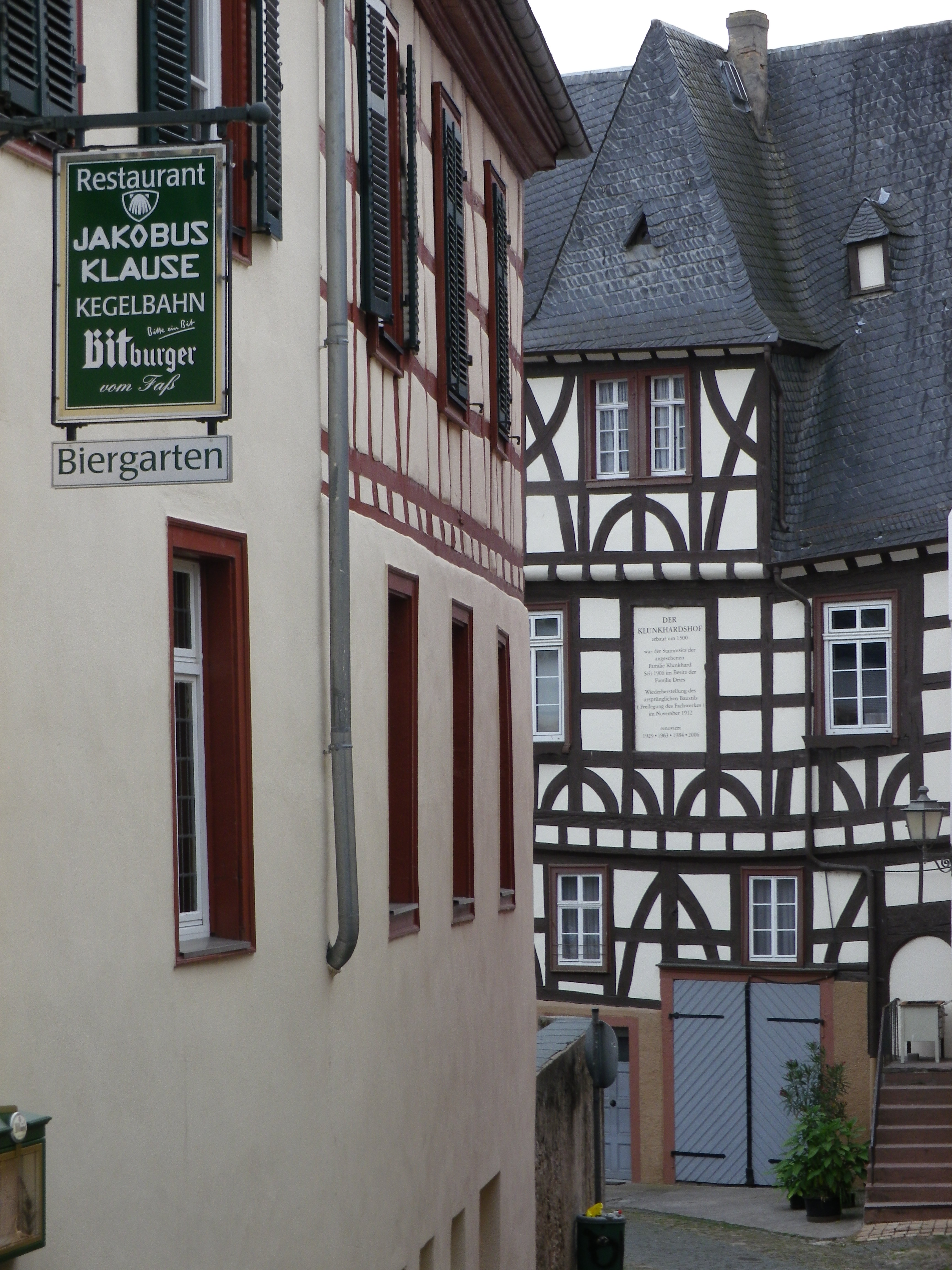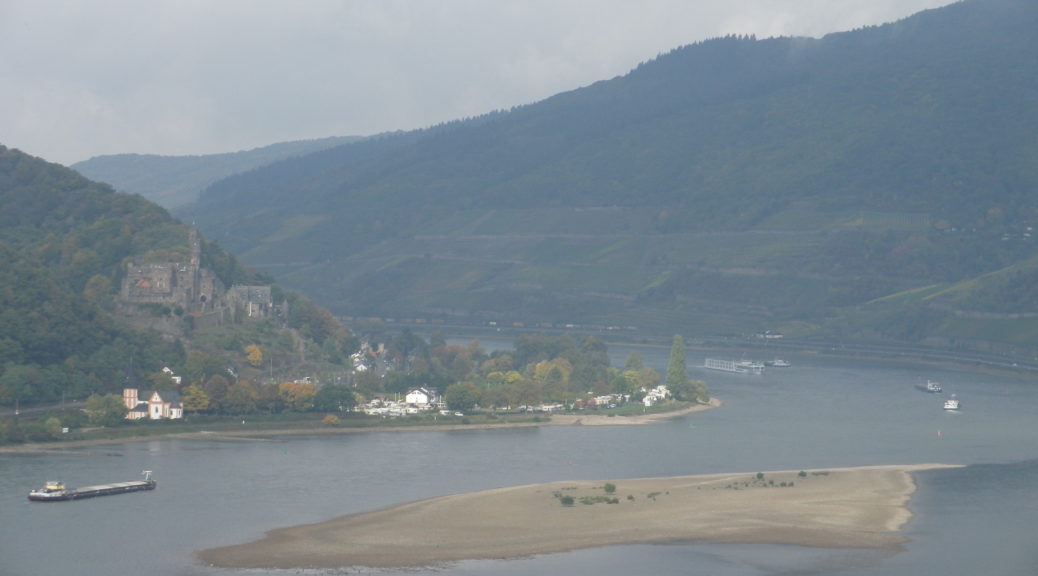The German state of Hesse is home to one of the most famous wine regions in the world for Riesling wine: the Rheingau. Here, hectares of terraced vineyards looming above the middle Rhine River arguably form the world’s most iconic riverine vineyard site.
Two trails named in honor of the Rheingau’s most famous product, Riesling wine, pass through these vineyards. One is a hiking trail, and the other is a cycling route. Both start together in Kaub, and follow the Rhine upriver. Both are over 60 kilometers long, the hiking trail actually being 91 kilometers in length. Not having enough time to hike the whole trail, and not knowing when I would get back to the area, I decided to cover half of the Rheingau trails’ area by hiking the northern half of the hiking trail, and then by cycling the southern half of the bicycle route.
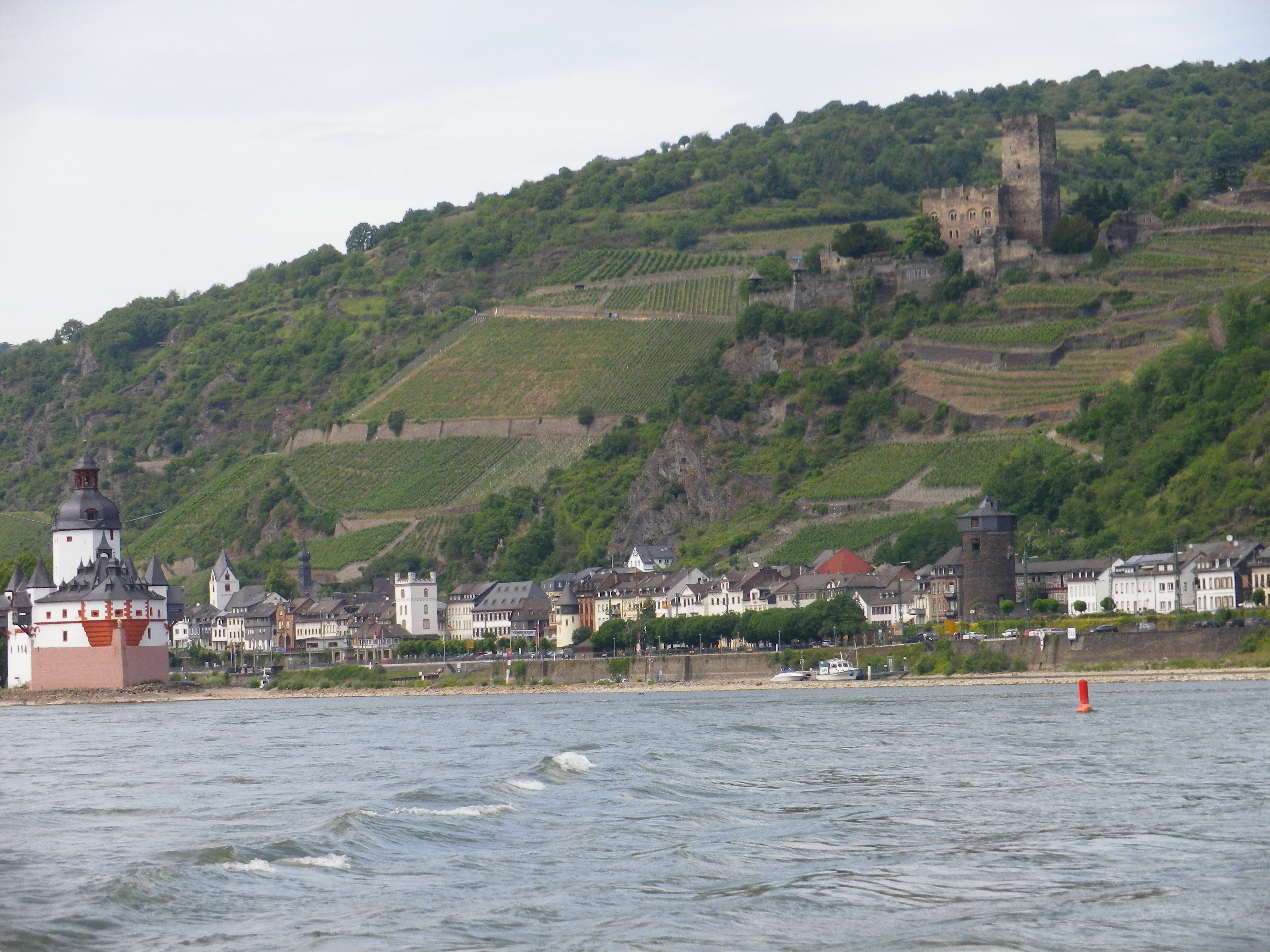
This is the story of the hiking trail, which will precede that of the cycling route. A quick look at a topographical map decided me in favor of hiking the northern half of the area before cycling through the remainder of the Rheingau. The Rheingau begins on the right bank of the Mittelrhein, a stunning, serpentine stretch of the Rhine river between Koblenz and Ruedesheim. Many people pay thousands of dollars to see this stretch of the river on a cruise, and regard it as money well spent. Others, myself included, pay considerably less for a day cruise, and likewise take home memories for life. Now I wanted to experience seeing this section of the river from above, which is what this hiking trail promised.
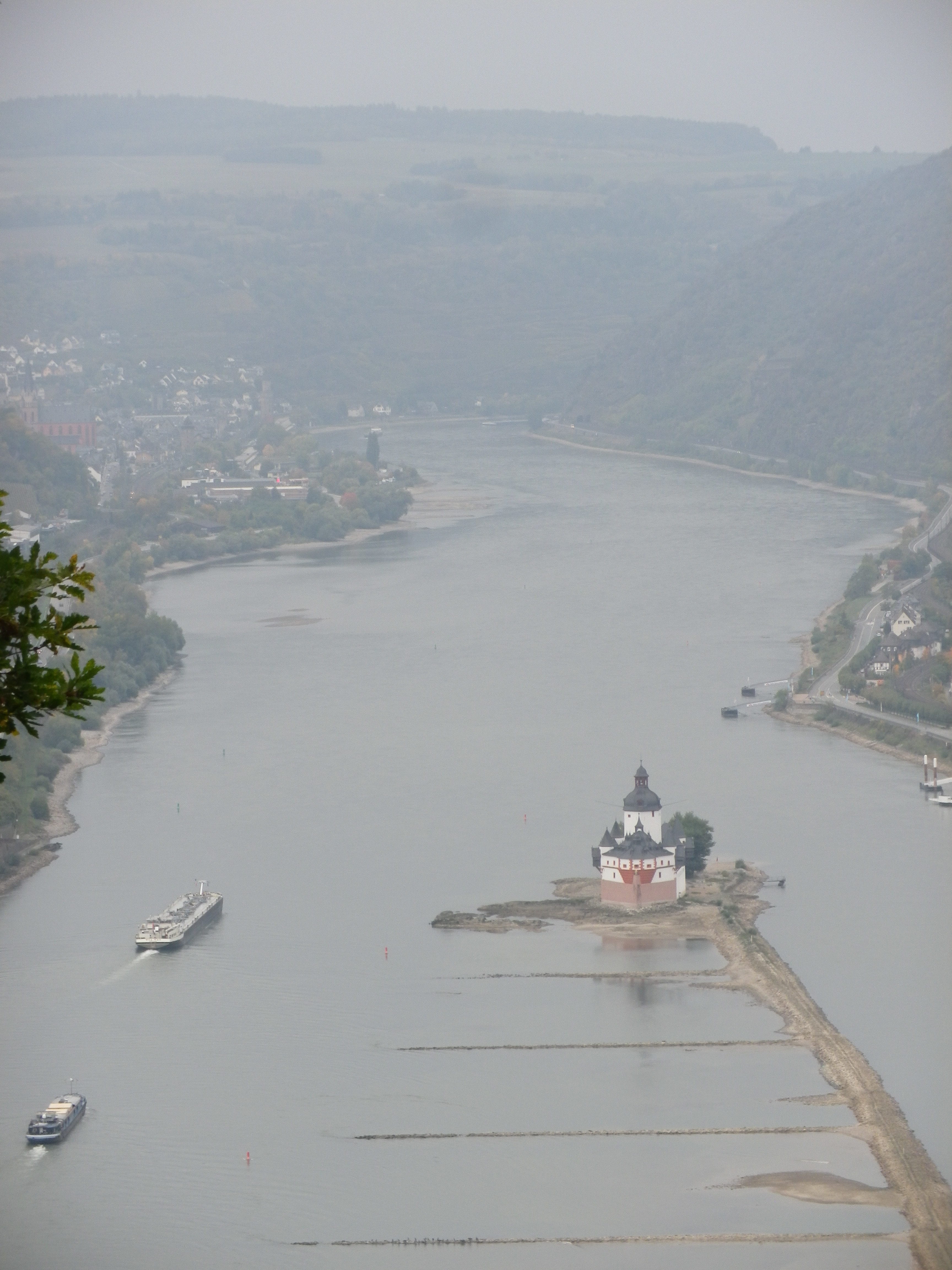
It delivered spectacularly. This hiking trail was one of the most scenic I have been on – ever. Even the rain and the mists served only make it more romantic and awe-inspiring. From the small riverside village of Kaub, the trail began with a fairly steep climb for about 20 minutes before levelling off. While it passed by the village vineyards, it soon entered the forest above them. At certain bends along the path, the trees had been carefully cleared, and amazing river vistas came into view. Each was more photogenic than the preceding one.
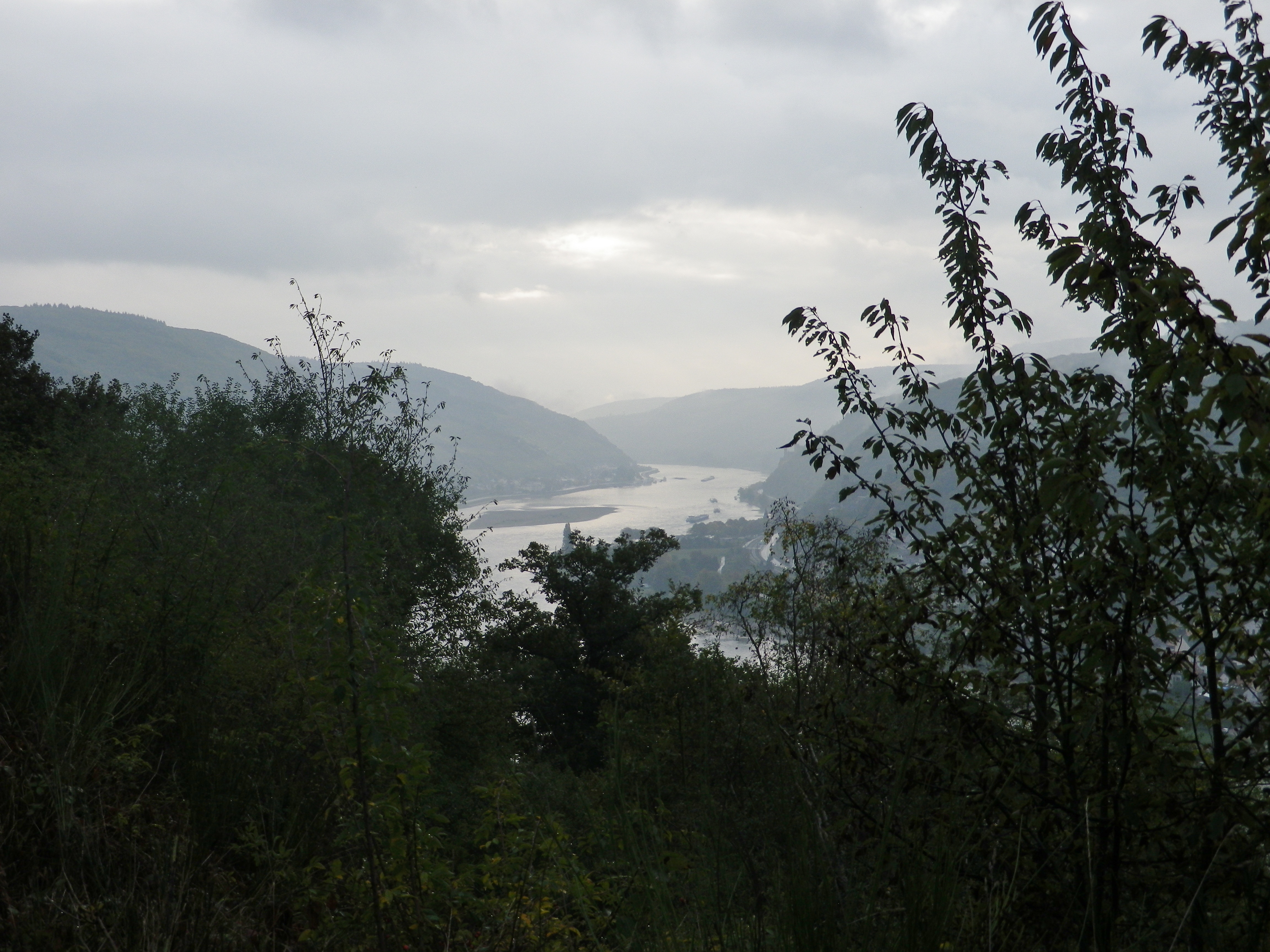
This section of the Rhine is famous not only for its narrow, dramatic scenery, but also for its castles. Burg (Castle) Gutenfels and Burg Pfalzgrafenstein are two at the start of the trail in Kaub! Along the way, to my end point at Ruedesheim, I would pass below Burg Nollig, and above Burg Ehrenfels, one of the most photographed along the Mittelrhein. On the opposite side of the river, first Burg Stahleck in Bacharach, then Burg Fuerstenberg, and the Heimburg, Sooneck, Burg Reichenstein, and finally Burg Rheinstein, all came into view by turn. These mighty structures were built by both ecclesiastic and secular to control the river traffic. Perched well above the river, the men stationed therein had long views up and down the river. Nonetheless, they could gain quick access to it in order to exact payment in the form of taxes on goods travelling along this important waterway.
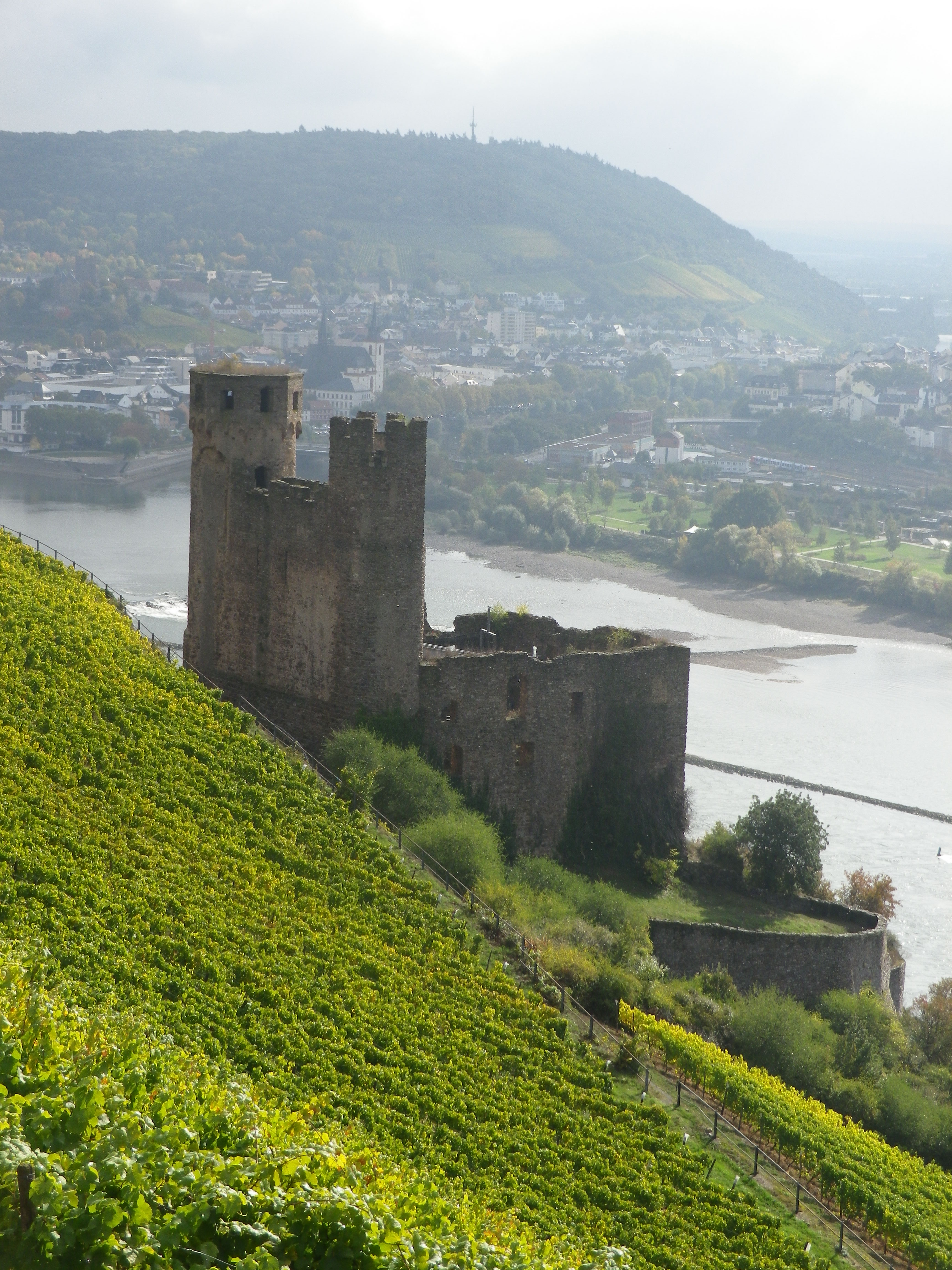
Along this part of the Rhine, the villages are squeezed between the river and the steep hillsides. And where the exposition is good, the hillsides are covered with vines. On the far side of the river is the German wine region known as the Mittelrhein, in the state of Rheinland-Pfalz. But the trail passes through the vineyards of the Rheingau region, in Hesse, which is famed for its rich Riesling wines. As the trail approaches Lorchhausen, it enters the territory of one of the wine region’s great cru: the Burgweg. Starting from the Rosenberg vineyards, to the Schlossberg, the Kapellenberg and finally the Bodental-Steinberg vineyards, hikers get an unparalleled view of the land that makes such delicious Rieslings. Needless to say, Lorch is a great place to stop for the night, which is what I did.
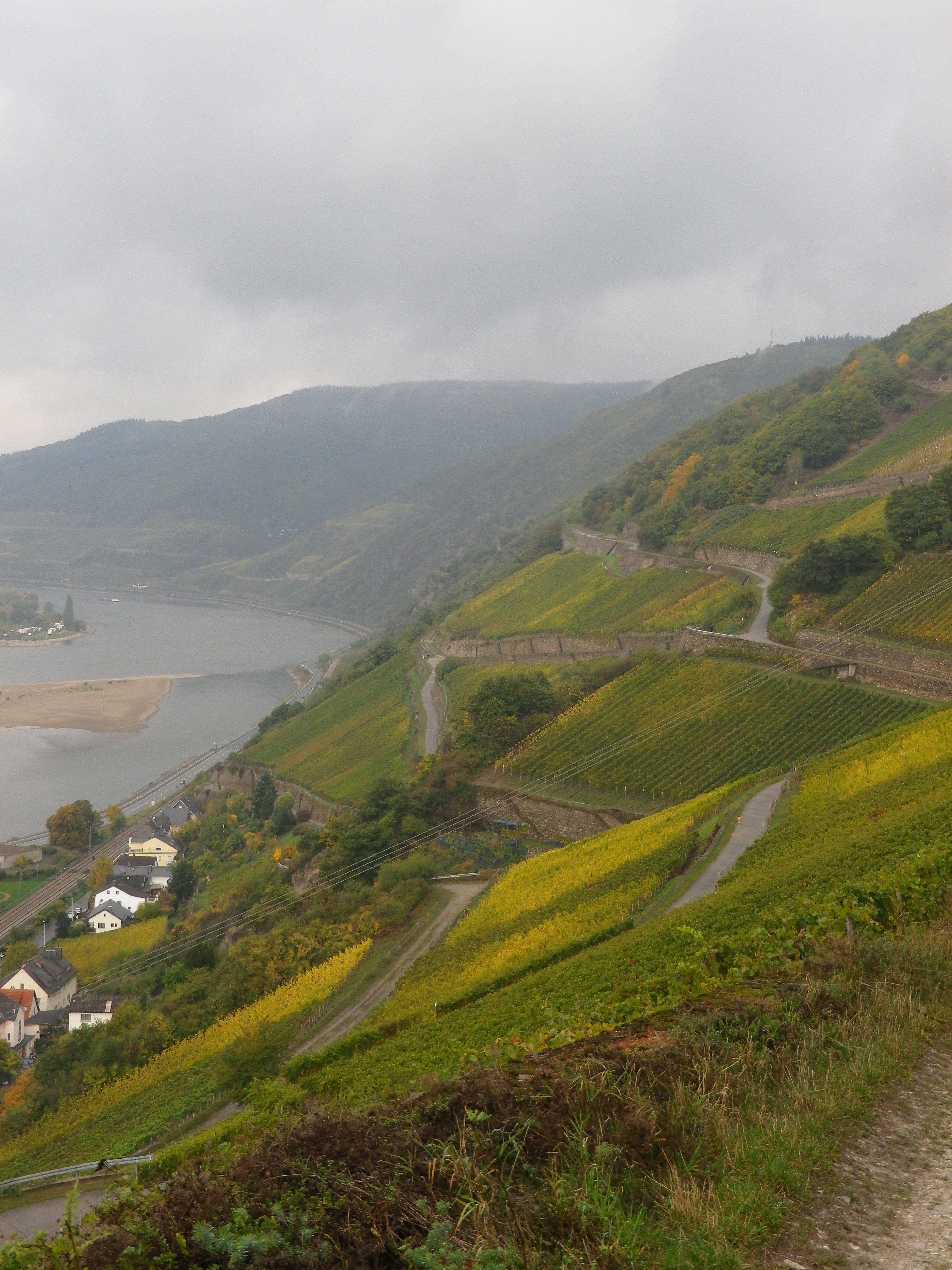
But after these well-known vineyards, the trail enters the forest, almost to the town of Assmannshausen, where the vineyards begin in earnest again, all the way to Ruedesheim and beyond. This popular tourist center marked the end of my hike. Its narrow lanes (world record holder for the narrowest) are lined with many wine bars, as well as good restaurants offering excellent local Rieslings along with decent fare. Having covered all of the Mittelrhein’s Rheingau wine region by foot, next I would follow the Rheingauer Riesling cycle route to the end of this delightful region.
